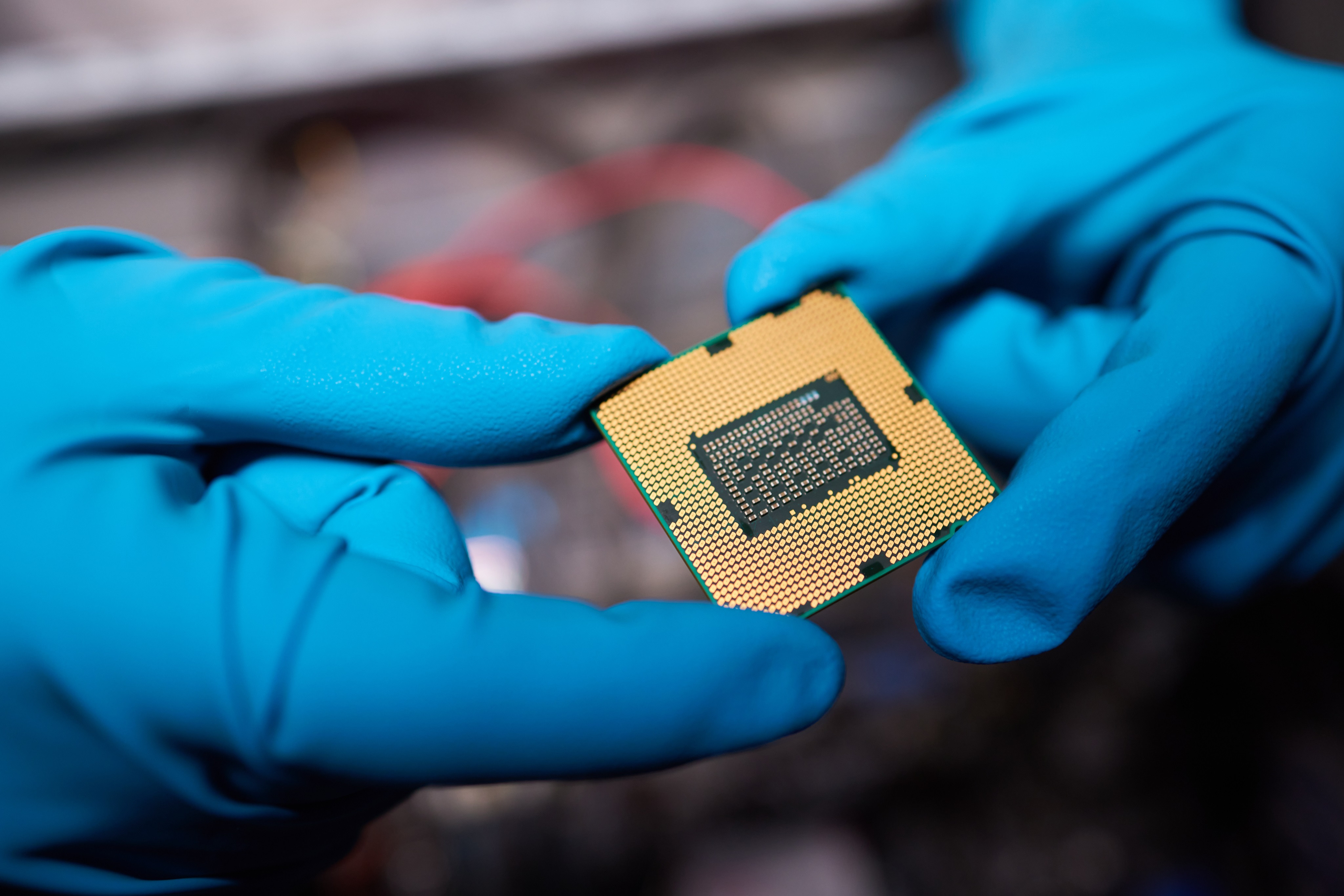The OPPO A5 Pro Series is designed for users who demand durability, high performance, and long-lasting reliability...

Intel N100 vs. Pentium Silver N6000 vs. Celeron N4500 - A Comparative Analysis
In the world of laptops, choosing the right processor can be a daunting task. With so many options available, it is important to understand the differences and find the one that best suits your needs. In this article, we will compare three popular processors: the Intel N100, Pentium Silver N6000, and Celeron N4500. By the end, you will have a clear understanding of which processor is the right fit for you.
Intel N100: Power Efficiency and Entry-Level Performance
The Intel N100 is a notebook CPU from the entry-level Alder Lake-N series. It offers 4 out of 8 efficiency cores (E-cores) with a clock speed ranging from 1 GHz to 3.4 GHz. While the N100 does not support HyperThreading, its performance is comparable to older Skylake cores, such as the i7-6300HQ.
Performance-wise, the N100 exhibits noticeable weakness compared to its counterparts, the i3-N305 and the N200, primarily due to the reduction in core count. The N100 falls slightly below the N200 in terms of performance, mainly because of lower clock speeds. It is also worth mentioning that the absence of P-cores in the Alder Lake-N configuration imposes limitations on single-core performance.
Moving on to graphics, the Alder Lake-N chip incorporates a graphics unit based on Xe architecture, featuring a maximum of 32 Execution Units (EUs). However, in the N100, only 24 EUs are activated, operating within a relatively low range of 450 to 750 MHz. These restrictions, along with the capped number of cores and clock speed and the single-channel RAM configuration, severely hinder gaming performance.
In terms of features, the compact Alder Lake-N chip partially integrates Wi-Fi 6E and Bluetooth 5.2, which are housed in the Platform Controller Hub (PCH). The chip's integrated memory controller supports Single-Channel DDR4-3200, DDR5-4800, and LPDDR5-4800.
Regarding power consumption, the N100 is designed with a low 6-watt (PL1) Thermal Design Power (TDP), making it well-suited for fanless systems. This efficiency is achieved through the utilization of the improved Intel 7 process, known as 10 nm SuperFin, during the chip's manufacturing process.
Pentium Silver N6000: Balanced Performance and Cost-Effectiveness
The Pentium Silver N6000 is a quad-core SoC introduced in early 2021, primarily used in budget-friendly notebooks. It clocks at 1.1 GHz to 3.3 GHz (single-core burst) and belongs to the Jasper Lake platform. The chip is manufactured using the modern 10nm process.
The Jasper Lake system-on-chips (SoCs) have undergone significant advancements compared to their predecessors, representing a notable evolution. In terms of architecture, it is anticipated that the single-core performance will witness an average increase of 30% when compared to the Goldmont Plus architecture, as demonstrated by the 10-80% improvement observed in SPECint and SPECfp benchmarks.
Moving on to performance, the Pentium N6000, benefiting from its enhanced architecture, outperforms the older Pentium N5030, although it still falls short of the Tiger Lake Quad-Core CPUs. However, it supports moderate multitasking requirements with ease and manages daily chores like web browsing and office apps with amazing efficiency.
As for graphics capabilities, the integrated UHD Graphics unit in the Pentium N6000 features 32 Execution Units (EUs), similar to the Gen. 11 graphics cores found in Ice Lake processors. These EUs operate at clock speeds ranging from 350 to 850 MHz and offer support for up to three displays, each capable of delivering a 4K resolution.
In terms of power consumption, the Pentium Silver N6000 adheres to the same specifications as its predecessor, boasting a Thermal Design Power (TDP) of 6 watts (Scenario Design Power - SDP of 4.8 watts). This low power requirement enables passive cooling configurations, although variants with fan-cooling options are also available to cater to different system designs and requirements.
Celeron N4500: Basic Performance for Simple Tasks
The Celeron N4500 is a dual-core SoC introduced in early 2021 and commonly found in entry-level notebooks. It clocks at 1.1 GHz to 2.8 GHz (single-core burst) and belongs to the Jasper Lake platform. The chip is manufactured using the 10nm process.
The Jasper Lake architecture, similar to the Pentium Silver N6000, exhibits notable enhancements compared to its predecessor, resulting in a significant 30% improvement in single-core performance when compared to the Goldmont Plus architecture. This advancement is reflected in the range of 10-80% performance gains observed in SPECint and SPECfp benchmarks.
Moving on to performance, the Celeron N4500 demonstrates a slight improvement over the older Celeron N4020 Dual Core, although it falls noticeably behind the faster Celeron N5100 from the Jasper Lake generation. It is best suited for basic tasks and limited multitasking scenarios.
Regarding graphics capabilities, the integrated UHD Graphics unit in the Celeron N4500 features 16 Execution Units (EUs), similar to the Gen. 11 graphics cores found in Ice Lake processors. These EUs operate at clock speeds ranging from 350 to 750 MHz and provide support for up to three displays, each capable of delivering a 4K resolution.
In terms of power consumption, the Celeron N4500 adheres to the same specifications as its predecessor, boasting a Thermal Design Power (TDP) of 6 watts (Scenario Design Power - SDP of 4.8 watts). This low power requirement enables passive cooling configurations, contributing to energy efficiency and potentially quieter operation.
If you are looking for a processor that can handle gaming, the Intel N100 or Pentium Silver N6000 would be better choices. The N100, despite its limitations, offers a more powerful graphics unit compared to the Pentium N6000, resulting in better gaming performance. All three processors—the Intel N100, Pentium Silver N6000, and Celeron N4500—are designed to be power-efficient. However, the N100 stands out with its low 6-watt TDP, making it suitable for fanless systems and maximizing power efficiency.
Both the Pentium Silver N6000 and the Intel N100 can easily handle routine tasks and light multitasking. In comparison to the Celeron N4500, the N100 has superior overall performance and multitasking capability because to its larger core count and clock rates.
The Intel N100, Pentium Silver N6000, and Celeron N4500 processors—all of which are soldered directly onto the laptop's motherboard—cannot, regrettably, be upgraded or replaced.
The Pentium Silver N6000 typically provides an excellent balance between performance and cost-effectiveness in terms of value for money. Compared to the Intel N100, it offers reasonable processing capability for daily workloads at a lower cost. However, the N100 can be well worth the money if you have certain needs or require greater processing power.
General Overview and Benchmark Score for Intel N100, Pentium Silver N6000 and Celeron N4500
Several significant aspects should be considered when comparing the Intel Processor N100, Intel Pentium Silver N6000, and Intel Celeron N4500. Starting with the general overview of the processors, the Intel Processor N100 is a 4-core laptop CPU released in January 2023, while the Pentium Silver N6000 and Celeron N4500 are both 2-core laptop CPUs, with the N6000 released in January 2021 and the N4500 having a 1.1 GHz clock speed.
In terms of single-core performance, the N100 outperforms both the N6000 and N4500 with a higher score. When it comes to power efficiency, the N100 outperforms both the N6000 and N4500 with a higher efficiency score. Regarding integrated graphics, the N6000 has a more powerful Intel UHD Graphics with 23 execution units compared to the N100's 20 execution units and the N4500's 17 execution units.

The Intel Processor N100, Pentium Silver N6000, and Celeron N4500 have been compared with respect to benchmark performance. In multiple tests, the Pentium Silver N6000 and Celeron N4500 are surpassed by the Intel Processor N100. The Processor N100 outperforms the Pentium Silver N6000 by 25% in single-core performance and by 46% in multi-core performance on Cinebench R23.

With a 119% advantage in single-core performance and a 126% advantage in multi-core performance over the Pentium Silver N6000, the Processor N100 shows a considerable edge in Geekbench 6. When it comes to integrated graphics performance, the Pentium Silver N6000 outperforms the Celeron N4500, scoring 32 EUs as opposed to the Celeron's 17 EUs. All things considered, the benchmark results show that the Intel Processor N100 performs better than the Pentium Silver N6000 and Celeron N4500.


Choosing the right processor for your laptop is crucial for ensuring optimal performance based on your needs and budget. The Intel N100, Pentium Silver N6000, and Celeron N4500 each offer their own set of advantages and limitations. If you prioritize power efficiency and entry-level performance, the N100 is worth considering. For a balance of performance and cost-effectiveness, the Pentium Silver N6000 is a solid choice. And if you are looking for a basic processor for simple tasks, the Celeron N4500 fits the bill. Assess your requirements and make an informed decision to find the processor that suits your needs best.










Leave a comment